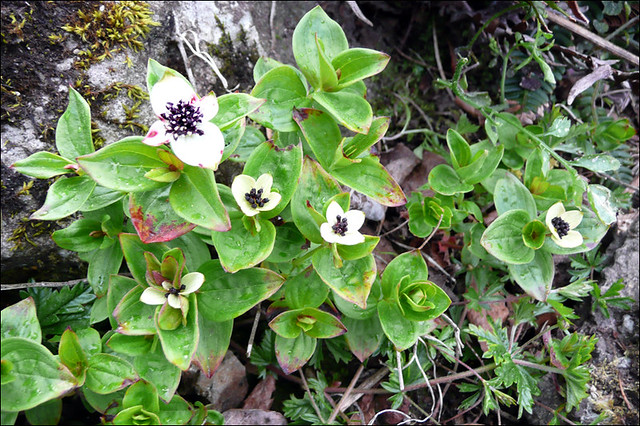Cornus suecica Cladus: Eukaryota Name Cornus suecica L. References * Species Plantarum 1:118. 1753 Vernacular names Cornus suecica (Swedish Cornel or Bunchberry) is a species of flowering plant in the genus Cornus (dogwoods), native to cool temperate and subarctic regions of Europe and Asia, and also locally in extreme northeastern and northwestern North America. These plants are herbaceous perennials growing to 5–15 cm tall, with few pairs of cauline leaves in opposite pairs, 2–4 cm long and 1–3 cm broad. The flowers are small, dark purple, produced in a tight umbel that is surrounded by four conspicuous white petal-like bracts 1-1.5 cm long. The fruit is a red berry. Habitat & Range: Wet woods & rocks; nearly circumboreal. In North America, the species is found in Alaska (U.S.) and British Columbia (Canada), and also eastern Canada (Labrador, New Brunswick, Newfoundland, Nova Scotia, and Quebec), as well as Greenland, but is absent in the intervening region.[1] Where Cornus canadensis, a forest species, and Cornus suecica, a bog species, grow near each other in their overlapping ranges in Alaska, Labrador, and Greenland, they can hybridize by cross-pollination, producing plants with intermediate characteristics.[2] ^ "BONAP distribution maps for North American species of Cornus". Retrieved 17 May 2011. Source: Wikipedia, Wikispecies: All text is available under the terms of the GNU Free Documentation License |
|

